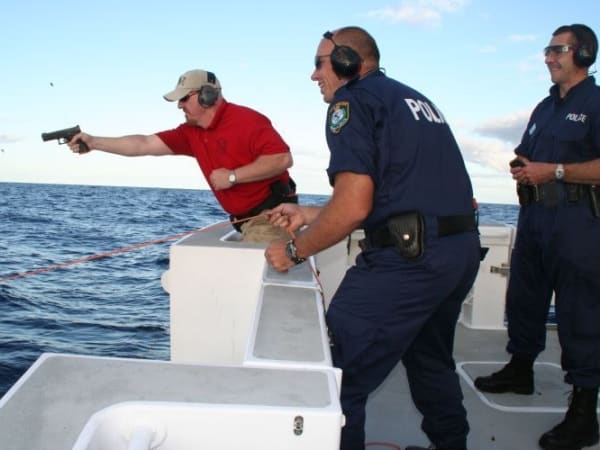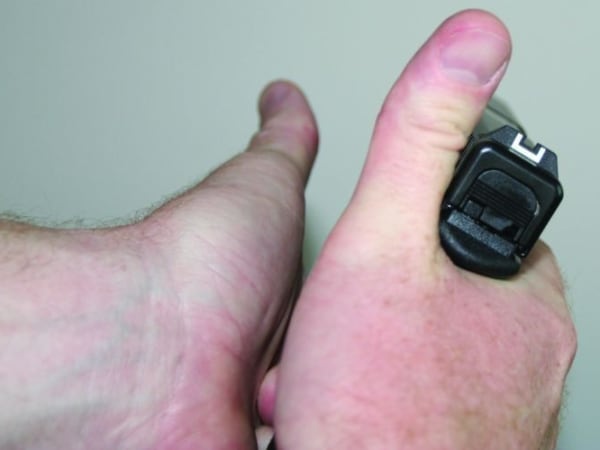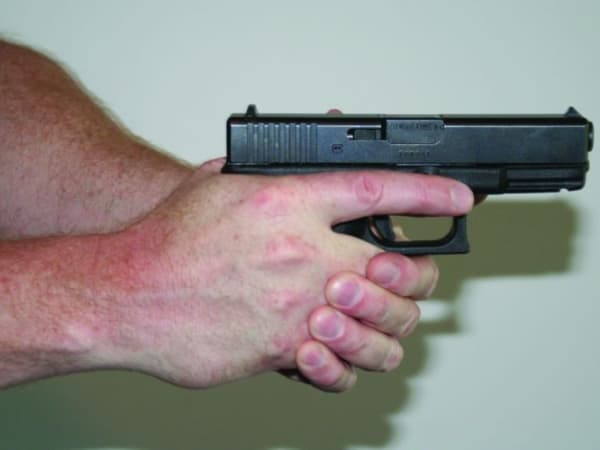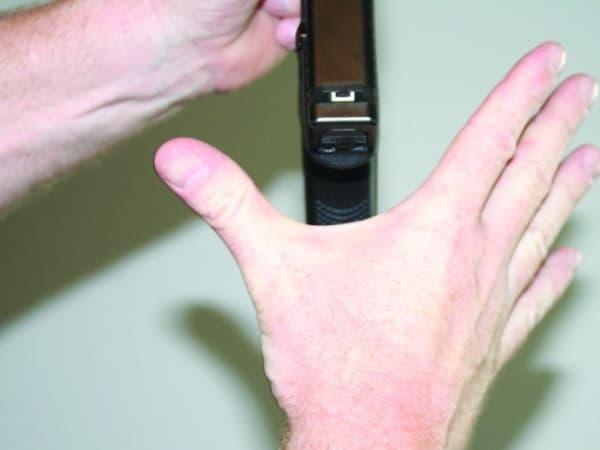Having a firm grip on your semi-automatic handgun is key for several reasons, the most important of which is to avoid what's commonly called "limp wristing" the gun. When a shooter has a weak or loose grip on the gun, it usually results in the firearm not cycling properly, causing the gun to jam. A firm grip will also help you on assignments, where you need to fire from a marine platform. Read "Perfecting Your Handgun Grip" for more. Photos courtesy of Michael Rayburn.
How to Grip Your Gun

Properly gripping a firearm is much more important to law enforcement officers than "trigger contol," which may be more useful in target shooting than in a gunfight. Under more traditional trigger-control training, officers must loosen their grips to slowly squeeze the trigger. A firm grip will also help you when firing from a marine platform.

By placing your thumbs along the side of the pistol's slide, you are able to obtain that all important tight, convulsive grip equally with both hands. Squeeze both hands together as hard as you can.

Get as much "meat" on the firearm as possible for control, epecially during rapid, multiple round firing. First, take your strong-side hand and form a V between your thumb and index finger. Take that V and place it over the grip of the firearm. Your hand should be as high up the backstrap as possible.

To get a two-hand grip, bring your off hand up to the other side of the gun and place the meaty part of your hand below your thumb. Come into contact with the grip itself. Your two hands come together like two pieces of a jigsaw puzzle.

A semi-auto pistol uses the energy from the round that was just fired to blow back the action/slide on the gun. In order for this to happen properly, the shooter has to offer resistance against the action of the slide being blown backward. If not, the entire gun will move and may cause the gun to jam for a variety of reasons.

